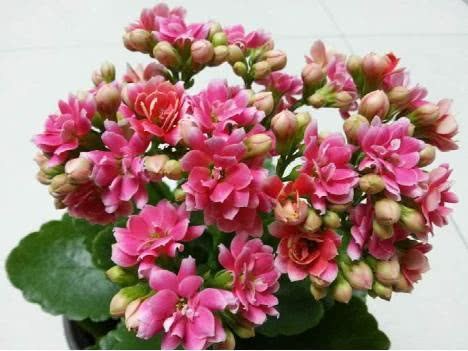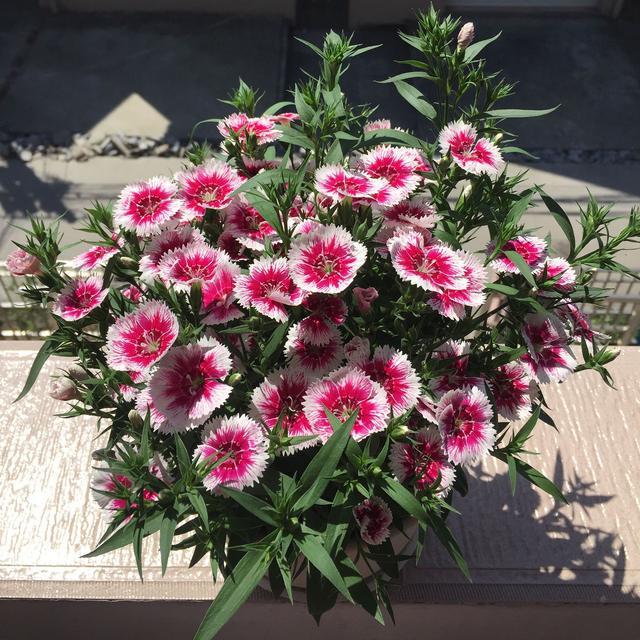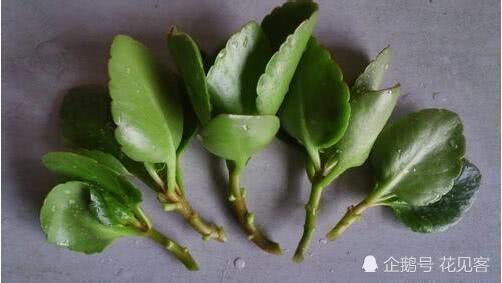You deserve to have these longevity flower cuttings. Hurry up and make up the lesson.

In the editor's impression, the longevity flower is the same as the sunflower, with extremely indomitable vitality. In fact, this is true, there are many ways to reproduce longevity flowers, but in order to reduce the workload of friends, the editor chose one that is easier to operate for your reference.
The best time for longevity flower cutting is from May to June or from September to October, when cutting is easy to survive and has the best effect. What is the specific operation of cutting? First of all, choose mature fleshy stems, friends remember not to use thin branches to cut, the survival rate is not high. Secondly, cut 5-6 cm long, then insert it in the sand, and cover it with a thin film after watering. After doing this, place the basin in an environment with the right temperature, the best temperature range is between 15 and 20 degrees.
Of course, you can also choose to use leaf cuttings, friends can take off the strong and thick leaves, wait for the wound to slowly dry, flat or oblique in the sand. Keep the sand humid and let the leaves sprout slowly.
Note:
The media of cutting can not be careless, which is related to whether the branches can take root. The editor suggests that it is best to use net yellow sand, sandy loam or nutrient soil as the medium, not only that, but also to disinfect the medium, which can be disinfected with 0.1% potassium permanganate solution.
If it is inserted directly into the media, the insertion depth is also required, preferably with 1amp 2 or 2pm 3. After compaction, friends should water thoroughly at one time, do not water too much, otherwise it is easy to make succulent stems or leaves rot, then it is necessary to start all over again.
There is no strong light on the succulent stem that has just been cut, so it is best to put it under the condition of astigmatism and there is no need to fertilize it.
There is also the problem of the incision, the upper incision needs to be flat and the lower incision can be oblique, which can be used to prevent the loss of moisture from the upper incision resulting in cutting failure.
Finally, it should be noted that after the new axillary buds and leaves grow, they can be transplanted.
- Prev

The best herbaceous flowers can live if they are thrown into the soil. They can blossom in four seasons and burst pots can give you a sea of flowers.
Guide green potted plants is a necessary embellishment of home life, raising some flowers and plants at home, many benefits, not only can beautify the room, but also happy mood. Huasheng potted Plant Diary No. 1173 takes you to know one of the best herbs. ...
- Next

Long-lived flower cuttage propagation to master this skill big white root is a pot of leaves
Longevity flower is a favorite flower for many flower friends. The leaves are dense and green, the flowers bloom in clusters, the flowers are rich and beautiful, and they have the meaning of "longevity and good luck". They can be used to decorate homes and indoor potted plants.
Related
- Wuhan Hospital Iron Tree Blooming Result Was Instantly Frightened by the Gardener Master
- Which variety of camellia is the most fragrant and best? Which one do you like best?
- What is the small blue coat, the breeding methods and matters needing attention of the succulent plant
- Dormancy time and maintenance management of succulent plants during dormancy
- Minas succulent how to raise, Minas succulent plant pictures
- What are the varieties of winter succulent plants
- How to raise succulent plants in twelve rolls? let's take a look at some experience of breeding twelve rolls.
- Attention should be paid to water control for succulent plants during dormant period (winter and summer)
- Watering experience of twelve rolls of succulent plants
- Techniques for fertilizing succulent plants. An article will let you know how to fertilize succulent plants.

